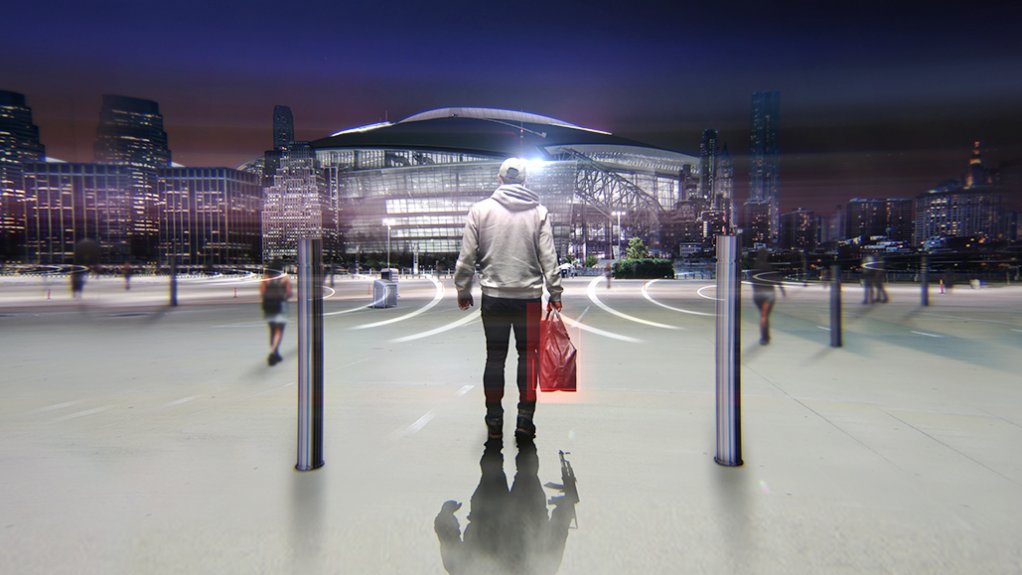As technological advancements drive the progress of intelligence, they also allow us to improve our resources for detecting concealed threats. AI now empowers the concealed weapons detection system – a system that is faster and more precise while being less intrusive.
That’s because emerging AI driven systems use sensors and algorithms to identify concealed weapons from a distance, eliminating the need for searches such as pat-downs. By employing frequency radio waves, some systems can generate scans of individuals up to 80 feet away effectively pinpointing weapons hidden from view.
Alternatively, systems also employ high resolution cameras and computer vision to analyze body characteristics, movements and clothing patterns – all which detect concealed weapons with an accuracy rate of up to 95%.
Although concerns surrounding privacy persist, AI based weapons detection holds the promise of enhancing security by identifying dangerous weapons before they become a threat.
While this technology is still evolving, it has already been implemented in airports, stadiums and government buildings. As AI continues to advance in sophistication, it will undoubtedly reshape how we strike that all-important balance between security and privacy.
The future has arrived, and concealed weapons detection systems are undergoing a transformation through the application of AI. This technology allows for the identification of firearms or knives, even when they are hidden in one’s clothing or in a bag.
With the use of cameras and sensors, AI systems can determine an object’s shape as well as density and temperature. Algorithms are also used to check for human cues, such as nervousness or movements that are not commonplace.
Some advanced systems take it a step further by incorporating data like face recognition, heartbeat detection and gait analysis.
This early detection and intervention capability enables security personnel to receive alerts on their smartphones or tablets. They can subsequently conduct investigations using this data and, once the threat is isolated from a crowd, guards can approach a subject accordingly.
How AI Supports Employees in the Security Field
It is important to note that AI is not intended to replace security guards. Instead it serves to enhance their overall effectiveness. With AI handling tasks such as screening and tracking, security personnel can focus on responding to credible threats.
AI Powered Image Recognition
Rather than relying on metal detectors these advanced systems use machine learning algorithms to analyze video feeds to accurately identify concealed weaponry.
Algorithms identify the patterns that human observers may overlook. Moreover, this use of intelligence continually improves both precision and feedback. Promising results have shown systems achieving over 90% accuracy in identifying concealed handguns during real world testing activities.
5 Primary Benefits of Using AI in the Security Field
The introduction of AI allows security personnel to respond promptly and confidently. Let’s look at the processes and benefits:
- As soon as the AI detects a concealed weapon in a video feed, an immediate alert is sent to the security personnel providing them with the information to locate the individual.
- Additionally, AI can notify guards about “objects that could potentially be weapons even if it has not encountered that specific weapon before.
- Systems can analyze security camera footage to identify concealed guns or knives.
- Systems use software with algorithms that are set up to detect protrusions or bulges beneath clothing as well.
- AI is used to detect signatures associated with weapons when they’re shrouded underneath a jacket or beneath a shirt, or the pockets of one’s pants. By using millimeter wave scanners, the system emits radio waves that go through fabrics and bounce off metal objects. This allows AI to compare them against known weapon signatures and determine their presence.
An Added Barrier Against Public Violence
Implementing these AI technologies into security systems greatly improves safety in venues such schools, workplaces, airports and public areas. Therefore, AI weapons scanners add a layer of protection to soft targets and crowded places (ST-CPs).
These are places like sports stadiums, shopping malls, schools, or public transportation stations- places where large numbers of people assemble, which are vulnerable to attack.
AI systems for concealed weapons detection are in a state of learning and improvement. As these systems continue to analyze scans and gather data, their machine learning algorithms will also become more proficient at accurately detecting knives and firearms.
A key factor in enhancing the system’s performance is the abundance of data. AI systems rely on thousands of scans to understand the positions and shapes that concealed weapons can take. Through repeated analysis of these scans, the systems become more adept at identifying any irregularities that may indicate the presence of weaponry.
Moreover, as systems evolve, they become more proficient at recognizing false threats for alarms, such loose clothing, bulky electronics or medical devices.
Therefore, AI detection rates improve while false positive rates decrease. Systems that have examined tens or hundreds of thousands of scans typically outperform those that only use data.
However it’s important to note that human experts still play a role in verifying the AI results and providing feedback for enhancing the learning process.
Continuous learning and improvement are essential because new weapons may emerge and the methods for camouflaging them may evolve. Therefore it is crucial for AI systems to adapt and stay ahead of these advancements over time.
The partnership between intelligence and artificial intelligence holds promise for the future of concealed weapons detection. With an expanding collection of data and continually improving algorithms, the use of AI will continue to support the security field both proficiently and impressively.
Although they’re not flawless AI powered systems assist security professionals in identifying threats that human screeners might overlook. In the security industry, AI has proven to be an instrumental ally – one that can aid in preventing acts of violence. The software is a security guard’s tool for enhancing the protection we often take for granted in this busy yet uncertain world.
